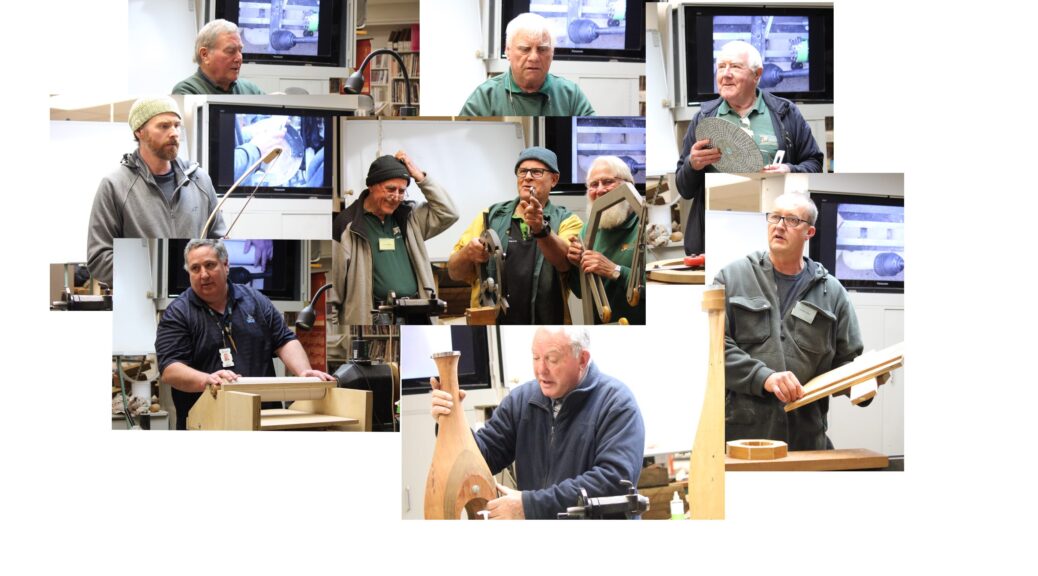Club Meeting: 1 July 2020
Report: John Young
For this demo, our members showed off all manner of jigs and tools that they had created throughout the years.
Bob’s Jigs
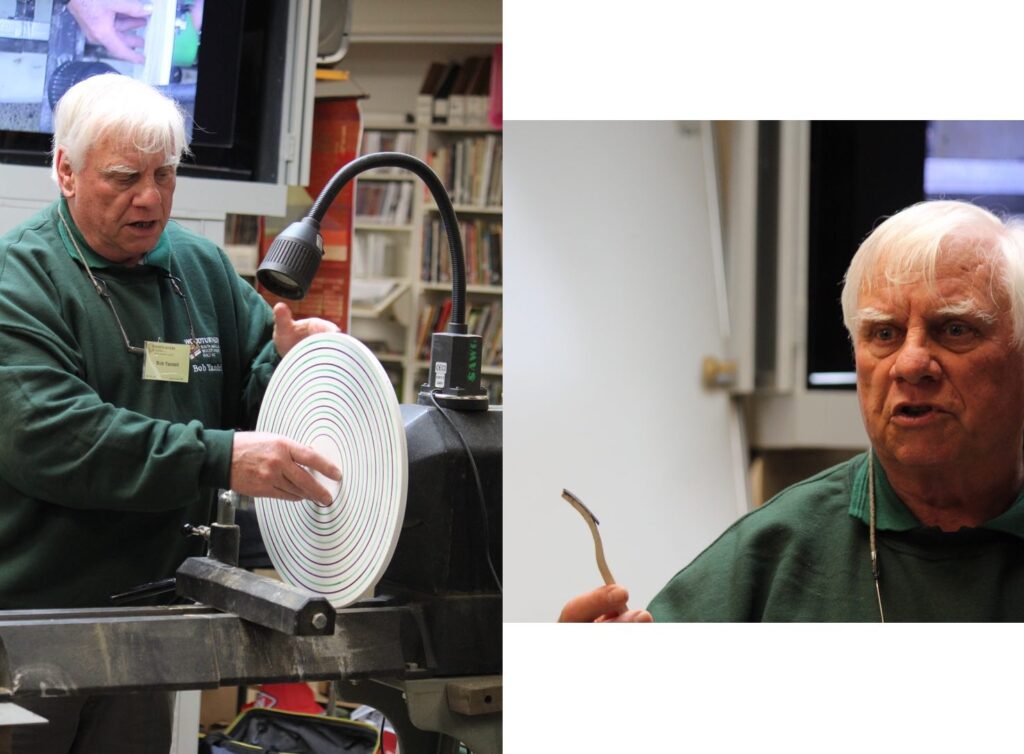
- A ply faceplate mount with concentric circles, allowing you to easily centre your plate or bowl (especially helpful if you have forgotten to mark the centre of the bottom of your bowl). Made of ply with 60mm chuck bite.
- Toothbrush shaped sanding stick. Sanding grit attached via velcro pad. For reaching into tight corners and awkward hard to reach spots.
Graham’s Jigs
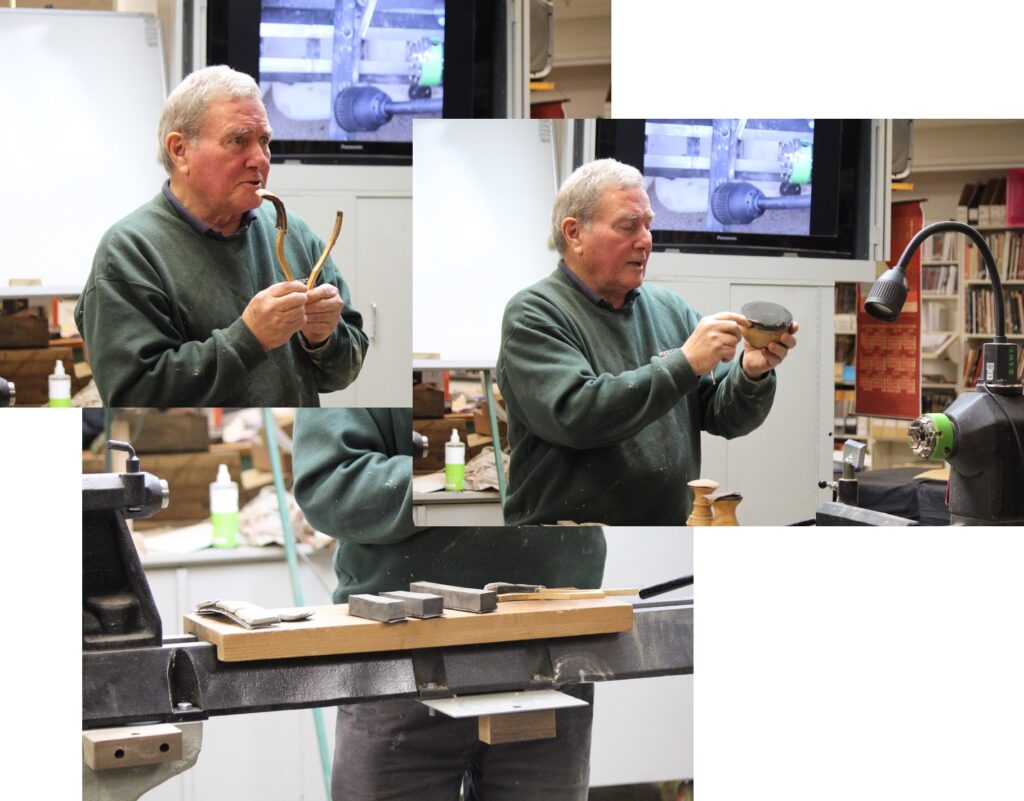
- Velcro backed pieces of ply with curves.
- Velcro backed sanding blocks
- Sanding blocks of various sizes
Terry’s Jigs
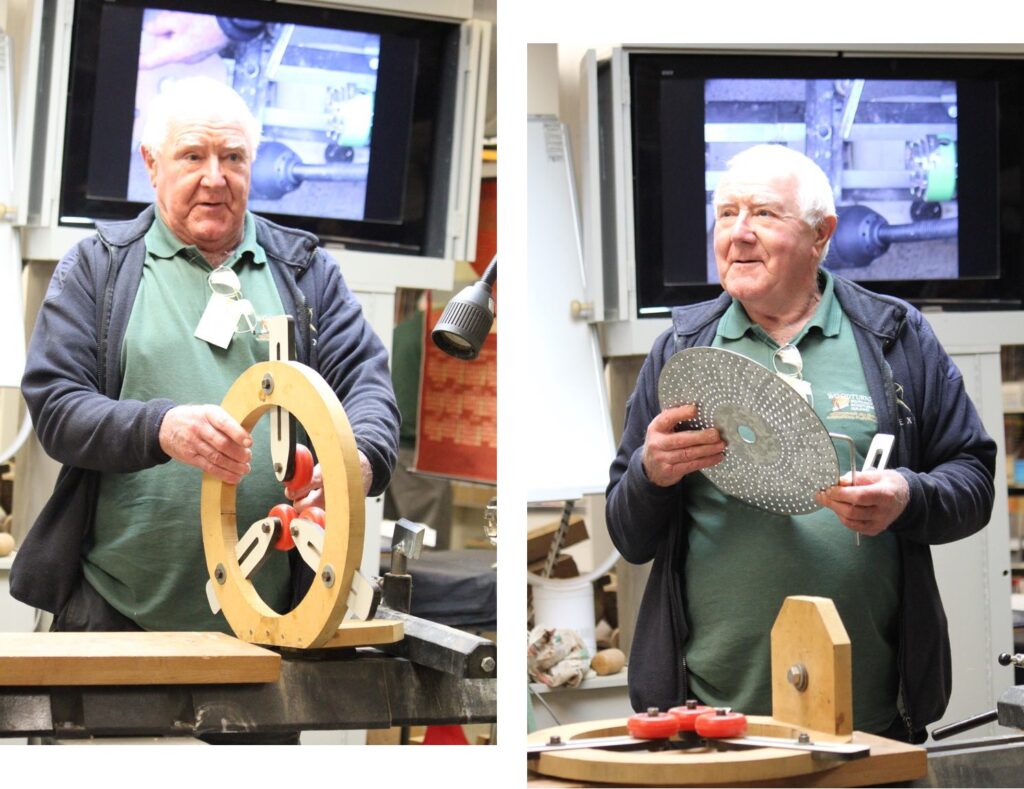
- Steadying Jig made from MDF, with skateboard wheels. Good for use on peppermills.
- Disk with holes in it for platters. All the holes help with indexing, helping with easy dividing for carving/embelishments.
Bruce Jig’s
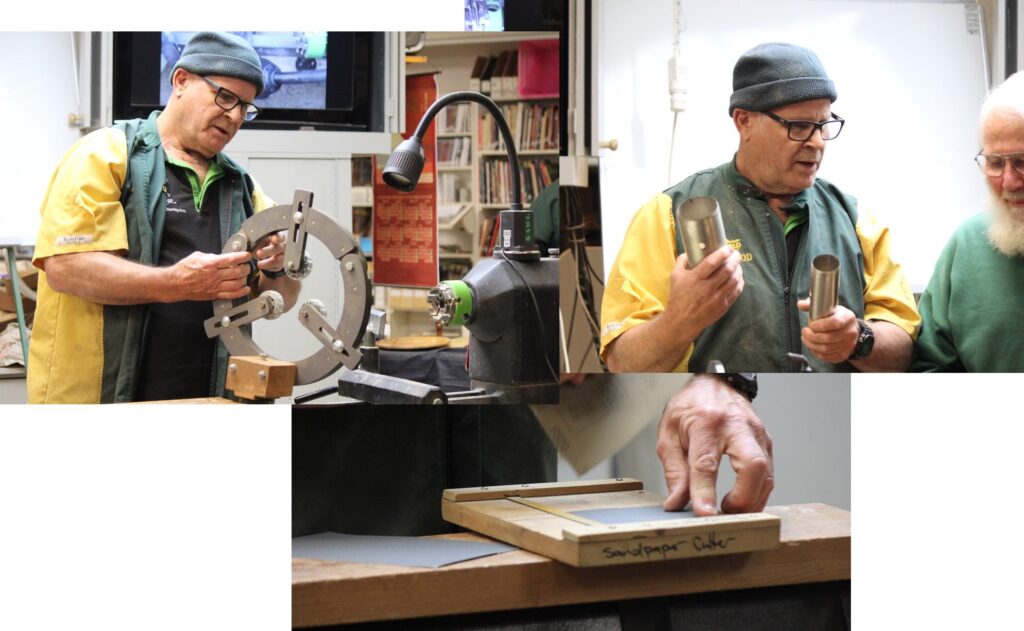
- Bruce’s steady. A latch in the bottom allows you to detach one side. This which allows you to remove steady, without having to remove your workpiece. Make from industrial formica. Rollerskate wheels have been turned for accuracy.
- Sandpaper cutter for dividing sandpaper into 8 equal sized pieces quickly. Uses a hacksaw blade. Note to write grit type of back of sandpaper before dividing.
- Stainless steel tubes, sharpened at end to punch out sandpaper rounds quickly. Sharpened with an angle grinder.
Dick’s Big Steady
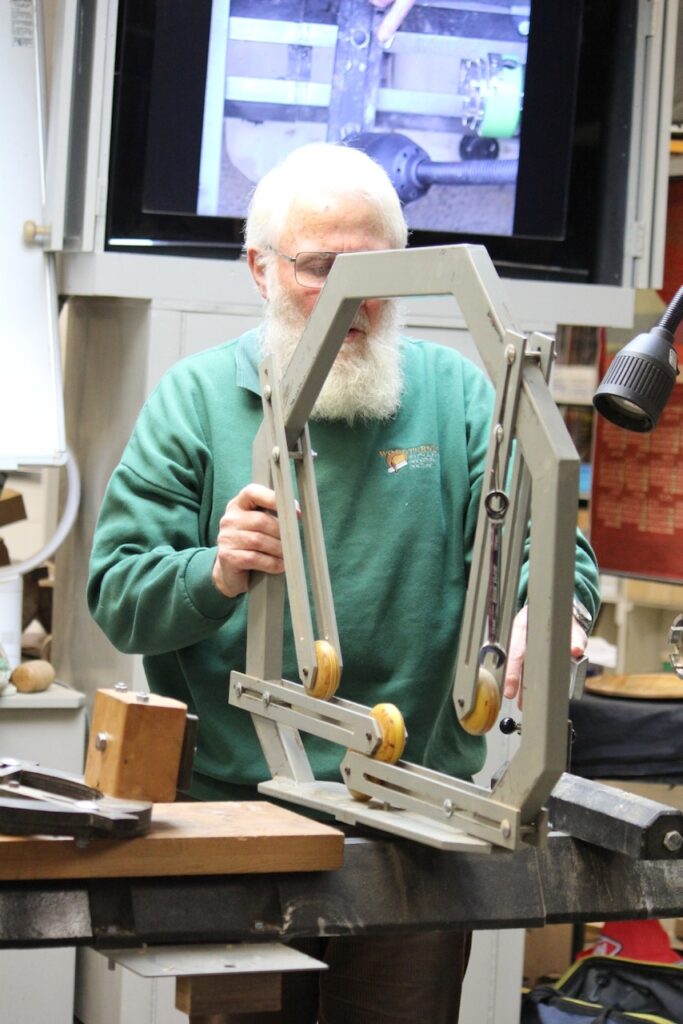
- Battleship sized, made from steel. Can fit very large diameter pieces.
Jim’s Steady
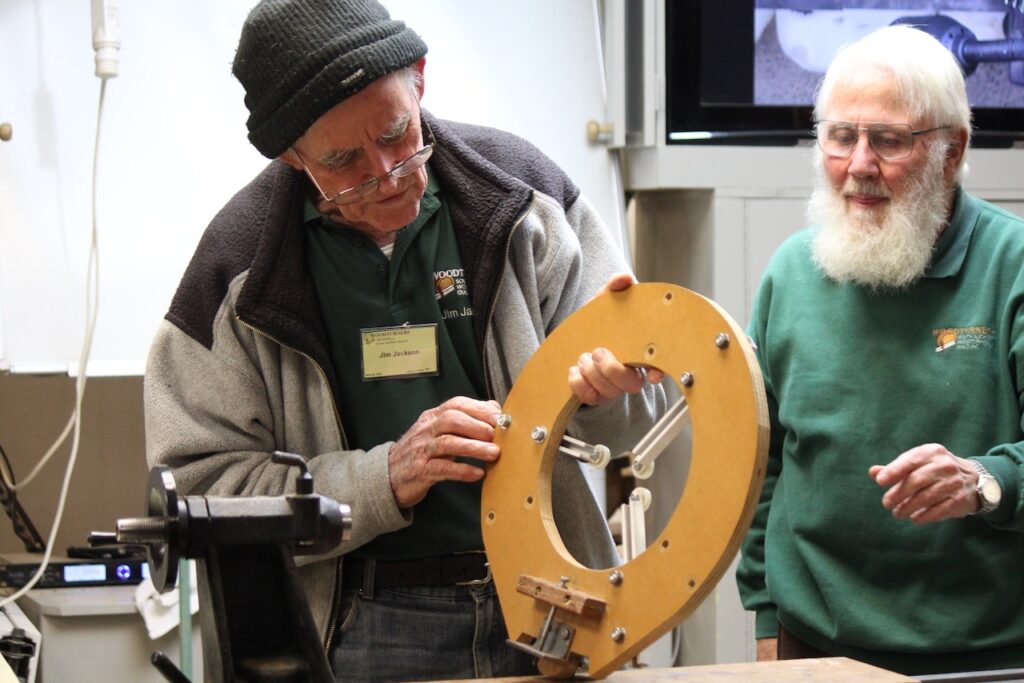
Wheels from a pulley off a wardrobe fitting. Small wheels allow you to get right down to a very tight circle.
Teles’s Jigs
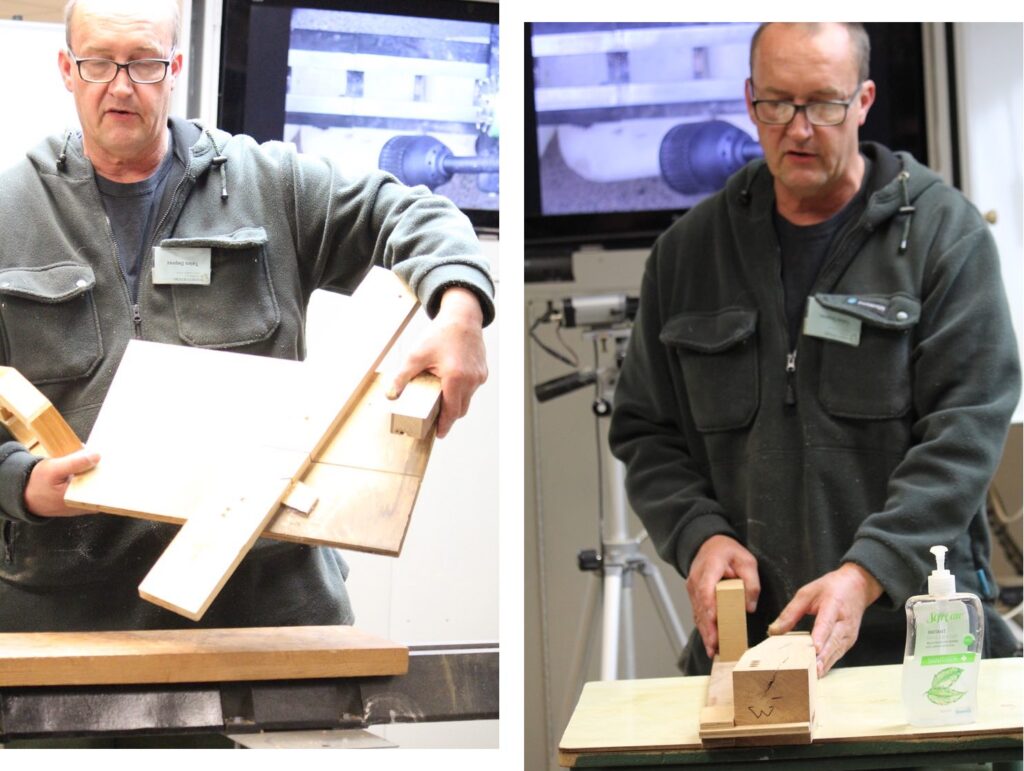
- Jig for cutting wood at the same angle to create segmented rings. Can adjust angle.
- Jig for cutting taper on table legs.
Dave Gillard’s Jigs
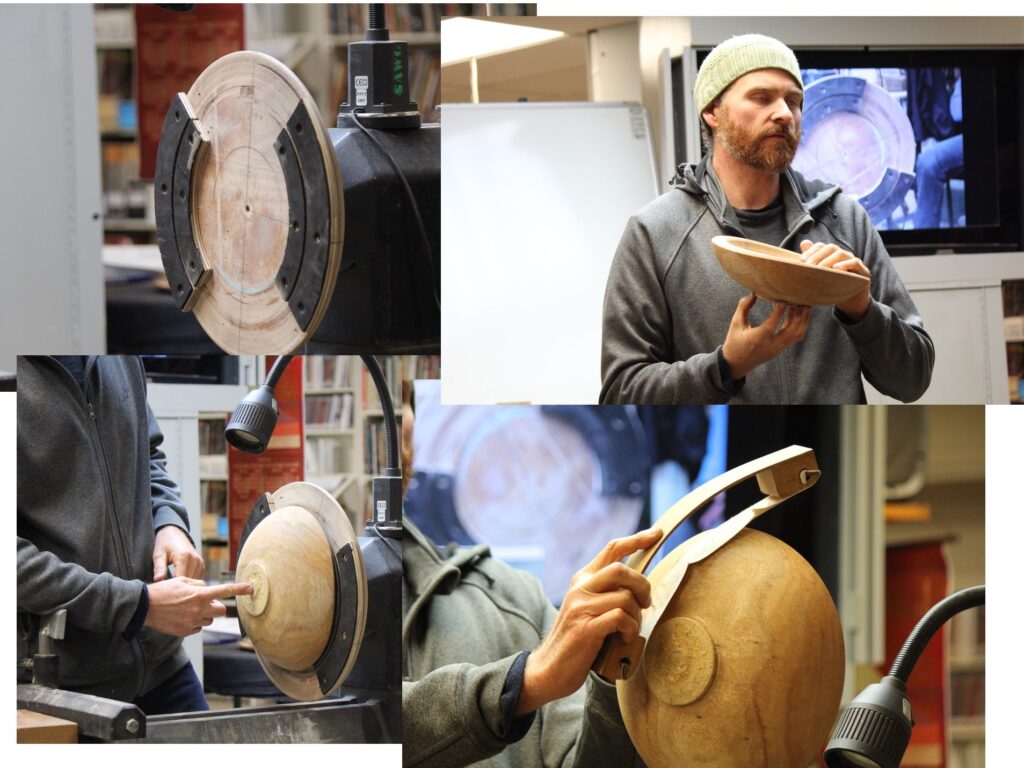
- Faceplate mount with raised sections covered in rubber form. Used for holding warped bowls.
- Grinding bit
- Plugs for fitting over steb centres to help hold your workpiece.
- Sanding bows of various sizes. Useful for sanding flat/high spots on hollow forms to get the perfect curve. Made from oak.
Cam’s “Squashed bottle”Jig
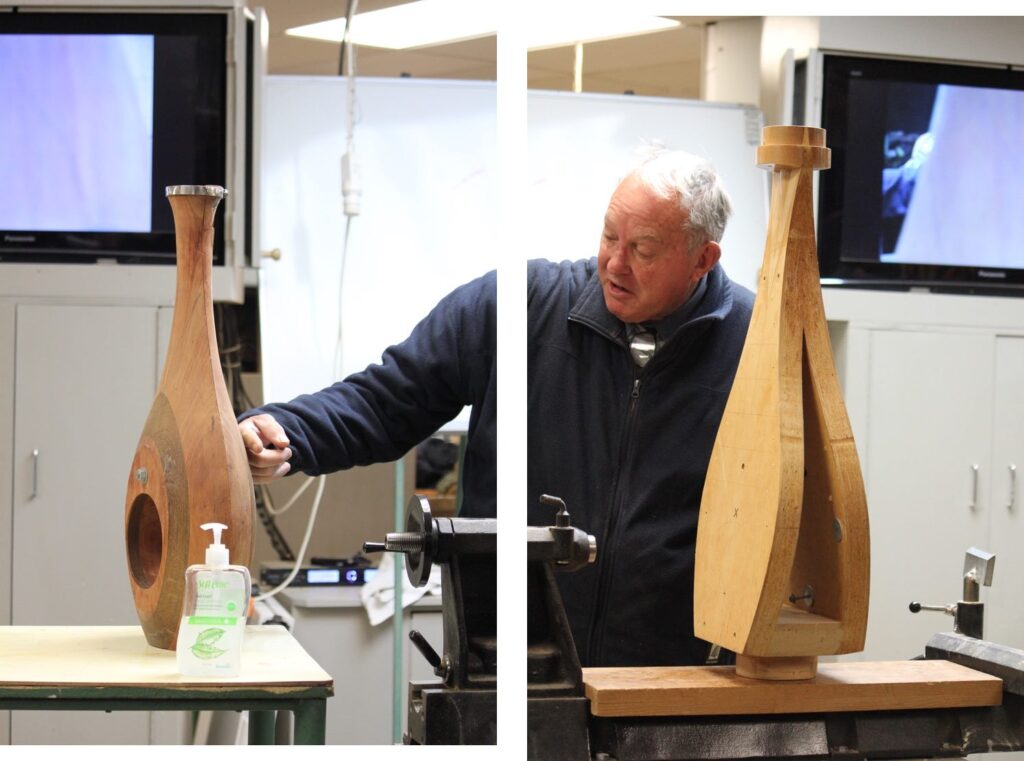
- Jig for turning a “squashed bottle” vase of Cam’s own design. Designed to put a section of wood on either side, which when turned down, will form the sides of your “squashed bottle”. Removes the need for counterweights.
Photo of large experimental “Squashed bottle” Vase which didn’t end to well, but thankfully injury was narrowly avoided.
John’s tail stock support
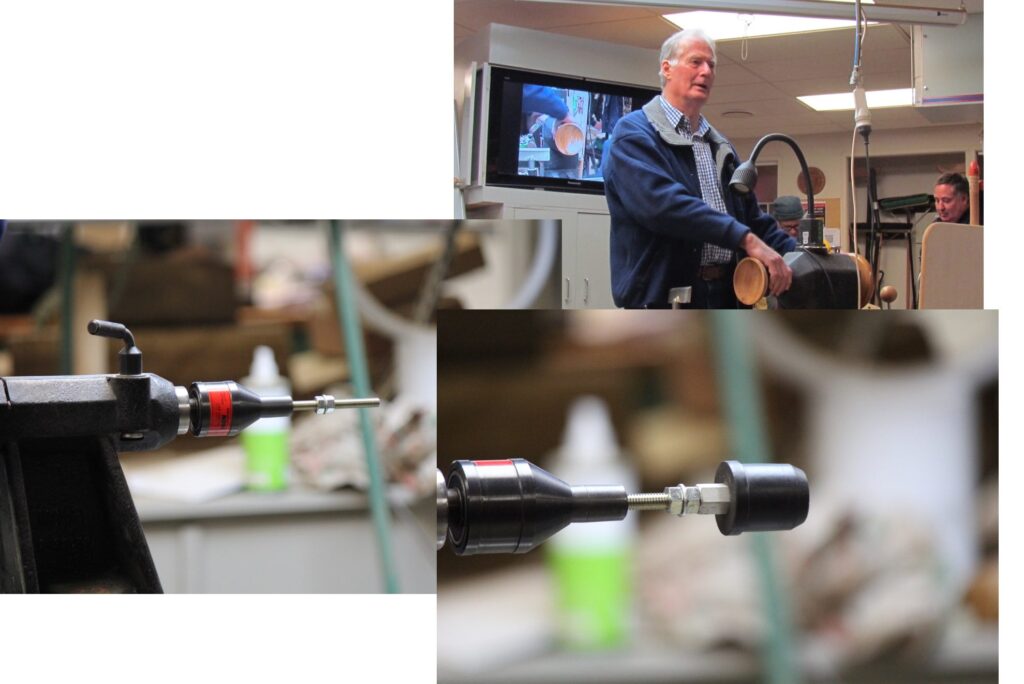
Nova live centre used. A threaded 2ft rod (From Steel masters in penrose) can be inserted. 2Ft rod can be cut up for more versitility than a simple short bolt. Assorted items (lids, bottle tops) can be fitted into the end that will fit up against the workpiece.
Jim’s improvised push stick
An old style wood plane is used. Strip of wood attached to bottom. It can then be used to push wood through a buzzer/planer, keeping fingers out of harms way.
Jacques Drum Sander
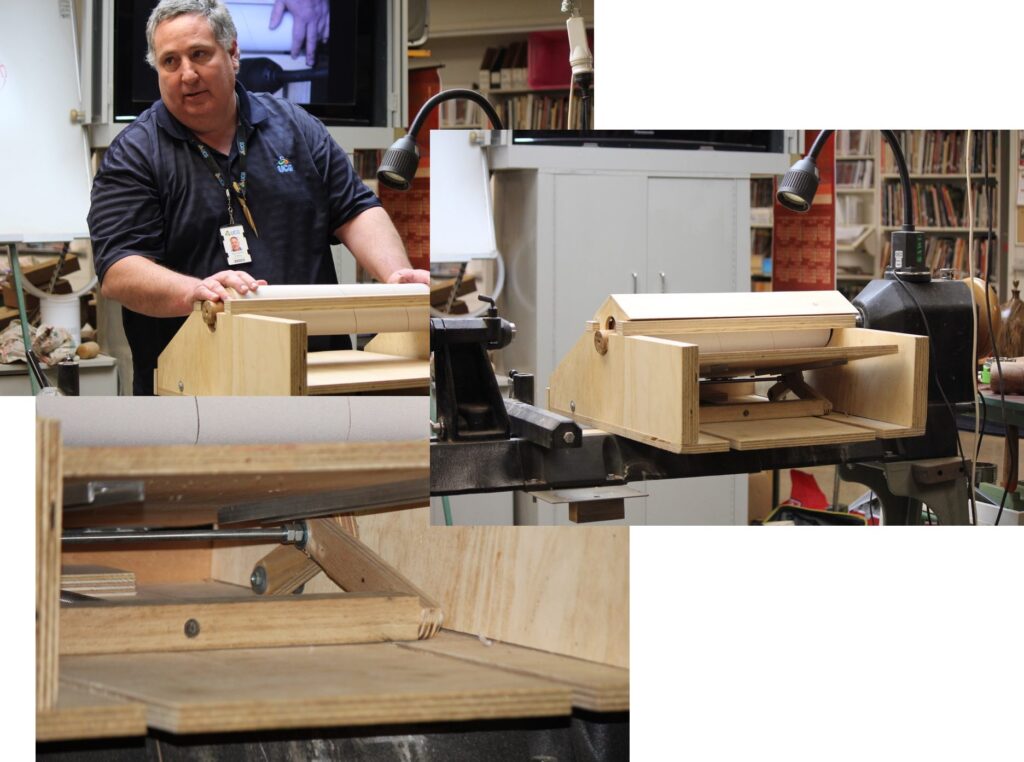
Home built drum sander for lathe. Velcro backed sandpaper fitted. Many iterations. Small car jack fitted inside which adjusts thickness. Wood must be firmly held onto or can be sucked through and shot out the back.
